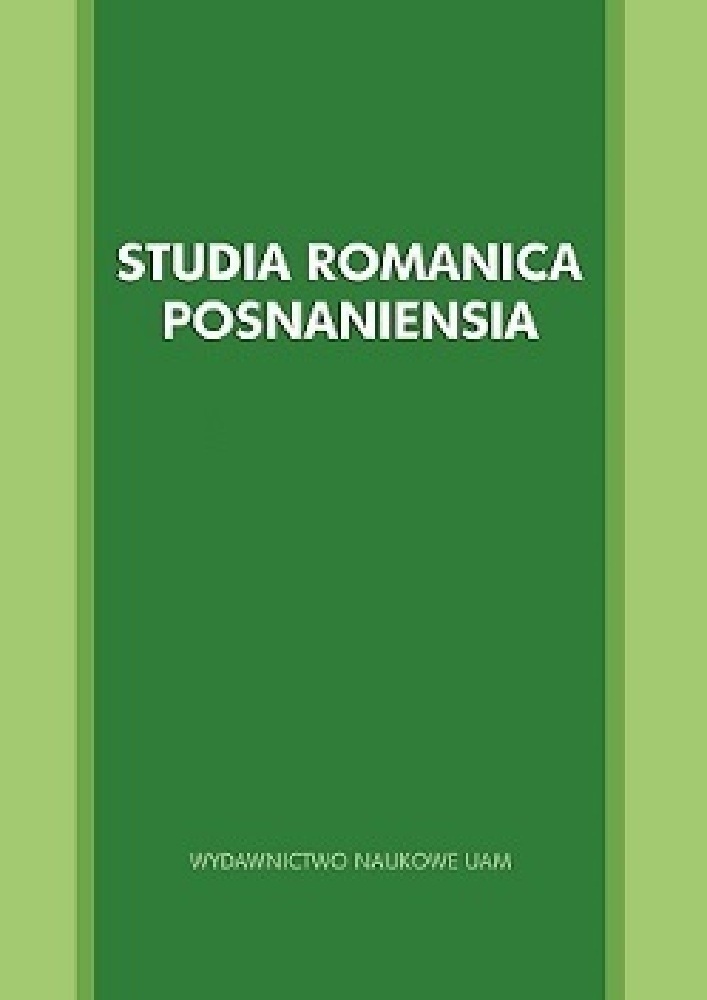Abstrakt
The aim of this article is to analyze a selection of New Year’s Eve speeches delivered by the presidents of Catalonia in terms of the presence of so-called “inclusive language”. The examined texts all date from the past fifteen years (2008-2022), so they were delivered after the enactment of the Organic Law 3/2007 on the effective equality of women and men. The choice of Catalonia as the subject of this study is particularly interesting due to socio-political circumstances surrounding this period, such as the economic crisis, the referendum on the independence, the suspension of autonomy and the imprisonment of proindependence leaders. Therefore, while the speeches analyzed will undoubtedly emphasize the strengthening of identity and belonging, it is also relevant to examine whether these discourses reflect the use of linguistic means aimed at emphasizing the presence of women.
Bibliografia
Bosque, I. (2012). Sexismo lingüístico y visibilidad de la mujer. Boletín de información lingüística de la RAE, 1, 1-18.
Czachur, W. (2016). Inscenizowanie bliskości w polskich i niemieckich orędziach noworocznych. Przyczynek do lingwistyki kulturowej i międzykulturowej. In J. Górnikiewicz, B. Marczuk & I. Piechnik (éds.), Études sur le texte dédiées à Halina Grzmil-Tylutki (pp. 73-96). Kraków: Biblioteka Jagiellońska.
Dedaić, M.N. (2006). Political Speeches and Persuasive Argumentation. In K. Brown (éd.), Encyclopedia of Language & Linguistics, vol. 9 (pp. 700-707). Oxford : Elsevier. DOI: https://doi.org/10.1016/B0-08-044854-2/00721-5
Elmiger, D. (2008). La féminisation de la langue en français et en allemand. Paris: Honoré Champion Éditeur.
García Meseguer, Á. (1994). ¿Es sexista la lengua española? Una investigación sobre el género gramatical. Barcelona: Ediciones Paidos.
Lakoff, R. (2004) [1975]: Language and Woman’s Place. Text and Commentaries. New York: Oxford University Press.
Lledó, E. (2007). De llengua, diferència i context. Barcelona: Institut Català de les Dones.
Sevilla Merino, J. (2018). Derechos, Constitución y lenguaje. Corts: Anuario de derecho parlamentario, 31, 81-104.
Szpyra-Kozłowska, J. (2021). O językowej nierówności płci i jej konsekwencjach. Polemika z tezami artykułu Ignacego Nasalskiego pt. „Funkcje i dysfunkcje języka inkluzywnego, ze szczególnym uwzględnieniem asymetrii rodzajowej w języku polskim”. Socjolingwistyka, XXXV, 413-430. DOI: https://doi.org/10.17651/SOCJOLING.35.24
CE = Conseil de l’Europe (1990). Recommandation no R (90) 4 sur l’élimination du sexisme dans le langage. https://search.coe.int/cm/Pages/result_details.aspx?ObjectId=09000016805019cd.
GenCat = Generalitat de Catalunya (2011). Guia d’usos no sexistes de la llengua en els textos de l’Administració de la Generalitat de Catalunya. Barcelona: Generalitat de Catalunya.
PE = Parlement européen (2018). Usage d’un langage neutre du point de vue du genre au Parlament européen. https://www.europarl.europa.eu/cmsdata/187098/GNL_Guidelines_FR-original.pdf.
UNESCO (1988). Actes de la Conférence générale, 24e session, Paris, 20 octobre-20 novembre 1987, v. 1: Résolutions. https://unesdoc.unesco.org/ark:/48223/pf0000076995_fre.
Licencja
Prawa autorskie (c) 2024 Marta Pawłowska

Utwór dostępny jest na licencji Creative Commons Uznanie autorstwa – Użycie niekomercyjne – Na tych samych warunkach 4.0 Międzynarodowe.
- Autor oświadcza, że przysługują mu osobiste i majątkowe prawa autorskie do Utworu oraz że nie są one ograniczone w zakresie objętym niniejszą Umową, oraz że utwór jest dziełem oryginalnym i nie narusza majątkowych lub osobistych praw autorskich innych osób.
- Autor udziela Uniwersytetowi im. Adama Mickiewicza w Poznaniu niewyłącznej i nieodpłatnej licencji na korzystanie z Utworu bez ograniczeń terytorialnych i przez czas nieokreślony na następujących polach eksploatacji:
2.1. wytwarzanie określoną techniką egzemplarzy Utworu, w tym techniką drukarską, reprograficzną, zapisu magnetycznego oraz techniką cyfrową;
2.2. wprowadzanie do obrotu, użyczenie lub najem oryginału albo egzemplarzy Utworu;
2.3. publiczne wykonanie, wystawienie, wyświetlenie, odtworzenie oraz nadawanie i reemitowanie, a także publiczne udostępnianie Utworu w taki sposób, aby każdy mógł mieć do niego dostęp w miejscu i w czasie przez siebie wybranym;
2.4. włączenie Utworu w skład utworu zbiorowego;
2.5. wprowadzanie Utworu w postacie elektronicznej na platformy elektroniczne lub inne wprowadzanie Utworu w postaci elektronicznej do Internetu, Intranetu, Extranetu lub innej sieci;
2.6. rozpowszechnianie Utworu w postaci elektronicznej w Internecie, Intranecie, Extranetu lub innej sieci, w pracy zbiorowej jak również samodzielnie;
2.7. udostępnianie Utworu w wersji elektronicznej w taki sposób, by każdy mógł mieć do niego dostęp w miejscu i w czasie przez siebie wybranym, w szczególności za pośrednictwem Internetu, Intranetu, Extranetu lin innej sieci;
2.8. udostępnianie Utworu zgodnie z wzorcem licencji Attribution-NonCommercial-ShareAlike 4.0 International (CC BY-NC-SA 4.0) lub innej wersji językowej tej licencji lub którejkolwiek późniejszej wersji tej licencji, opublikowanej przez organizację Creative Commons. - Autor zezwala Uniwersytetowi im. Adama Mickiewicza w Poznaniu na:
3.1. nieodpłatne korzystanie i rozporządzanie prawami do opracowań Utworu i tymi opracowaniami.
3.2. wysyłanie metadanych Utworu oraz Utworu do komercyjnych i niekomercyjnych baz danych indeksujących czasopisma. - Autor upoważnia i zobowiązuje Uniwersytet im. Adama Mickiewicza w Poznaniu do udzielania osobom trzecim dalszych licencji (sublicencji) do Utworu oraz do innych materiałów, w tym utworów zależnych lub opracowań zawierających lub powstałych w oparciu o Utwór, przy czym postanowienia takich sublicencji będą tożsame z wzorcem licencji Attribution-NonCommercial-ShareAlike 4.0 International (CC BY-NC-SA 4.0) lub innej wersji językowej tej licencji lub którejkolwiek późniejszej wersji tej licencji, opublikowanej przez organizację Creative Commons Tym samym uprawnia wszystkich zainteresowanych do korzystania z utworu wyłącznie w celach niekomercyjnych pod następującymi warunkami:
4.1. uznanie autorstwa czyli obowiązek podania wraz z rozpowszechnionym utworem informacji, o autorstwie tytule, źródle (odnośniki do oryginalnego utworu, doi) oraz samej licencji;
4.2. na tych samych warunkach, wolno rozpowszechniać utwory zależne jedynie na licencji identycznej to tej, na jakiej udostępniono utwór oryginalny. - Uniwersytet im. Adama Mickiewicza w Poznaniu jest zobowiązany do:
5.1. udostępniania Utworu w taki sposób, aby każdy mógł mieć do niego dostęp w miejscu i w czasie przez siebie wybranym bez ograniczeń technicznych;
5.2. poprawnego informowania osób, którym Utwór będzie udostępniany o udzielonych im sublicencjach w sposób umożliwiający odbiorcom zapoznanie się z nimi.
Pozostałe postanowienia
- Uniwersytet im. Adama Mickiewicza w Poznaniu zachowuje prawo do czasopisma jako całości (układ, forma graficzna, tytuł, projekt okładki, logo itp.).

